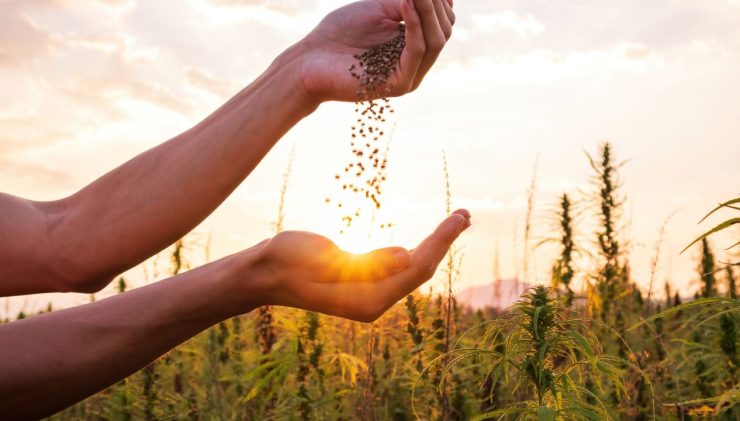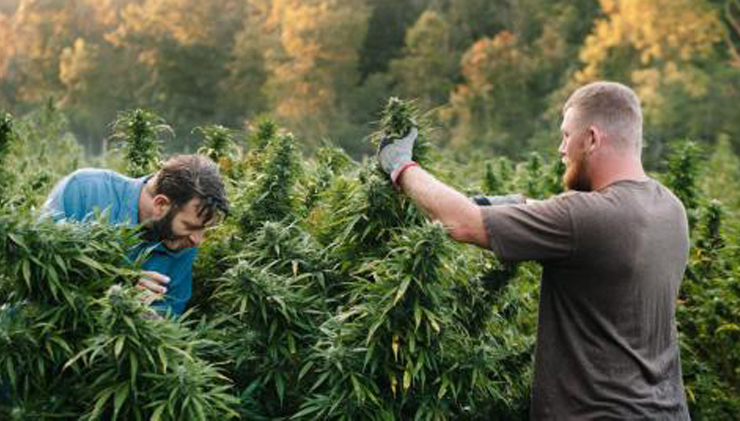 Lessons Learned from a $200,000 Cyber Theft
Lessons Learned from a $200,000 Cyber TheftHemp crop yields can be fickle. Too much water, too little water, a late freeze, or any number of unexpected developments can result in a poor season and lost money. Growing hemp comes with risk, but growers can protect themselves with hemp crop insurance.
The Hemp Industry Boom
Prior to 2018, federal law grouped hemp with marijuana as an illegal substance. This changed with the Agriculture Improvement Act of 2018, which removed hemp and hemp seeds from the Drug Enforcement Administration’s schedule of Controlled Substances.
According to Modern Farmer, thousands of farmers began growing hemp in 2019 as a result of this change to the law. Hemp become a booming industry overnight. The USDA says hemp production totaled $824 million in 2021.
Risks to Hemp Crops
Hemp is a booming industry, but there is no guarantee all crop yields will be successful. Like other crops, hemp is susceptible to drought, floods, and disease. It may also be necessary to destroy hemp crops if their THC levels surpass the allowable limit. Such plants are often described as “hot” hemp crops.
Here are just a few examples of crops not turning out as hoped:
- According to research published in the journal Plant Disease, commercial crop fields became common in California in 2019 and 2020, but the plants developed virus-like symptoms associated with curly top disease (CTD).
- The Texas Legislature promoted hemp as a drought-resistant crop, but the Texas Tribune says hemp planted in the state hasn’t been able to withstand the extreme drought conditions.
- A new rule passed in 2021 requires total THC levels to be at 0.3% or less, according to News Channel 5 Nashville. Previously, only levels of Delta-9 THC were counted. Many hemp farmers in Tennessee had to destroy their crops, as the Department of Agriculture said 42% of all crops were non-compliant.
Protecting Crops with Crop Insurance
Crop insurance provides important protection for farmers.
According to the National Association of Insurance Commissioners (NAIC), there are two categories of crop insurance.
- The first consists of the federally-subsidized Multi-Peril Crop Insurance, which covers a broad range of perils, including drought, excessive moisture, freeze, and disease. You must purchase Multi-Peril Crop Insurance before planting. Bear in mind it does not cover damage to farm infrastructure.
- The second category consists of state-regulated private crop insurance, called crop-hail insurance. Private crop insurance options may also cover many other perils. Since multiple companies offer these policies, the terms may be more flexible. It is possible to purchase coverage at any time during the growing season.
Can You Insure Hemp?
The USDA says Multi-Peril Crop Insurance for hemp is available in select counties through a pilot program. The Hemp Actual Production History Pilot Program says coverage is available in certain counties in Alabama, Arizona, Arkansas, California, Colorado, Illinois, Indiana, Kansas, Kentucky, Maine, Michigan, Minnesota, Montana, Nevada, New Mexico, New York, North Carolina, North Dakota, Oklahoma, Oregon, Pennsylvania, Tennessee, Texas, Virginia, and Wisconsin. You can check whether a county is eligible at the Risk Management Agency site.
The Hemp Actual Production History Pilot Program insures against many losses, including adverse weather, fire, insects, plant disease, wildlife, earthquake, volcanic eruption, and failure of irrigation water supply. However, it does not cover losses related to the destruction of crops that exceed the allowable THC limit or have inferior CBD quality or concentration.
Hemp growers can also look for insurance in the private market. In addition to traditional crop-hail policies for hemp, growers may like to consider parametric coverage options. Parametric insurance policies typically cover a specific peril, such as wildfire. Whereas traditional insurance pays claims based on actual losses, a parametric payment is triggered when certain conditions occur – for example, if a wildfire occurs within a certain area, regardless of the actual amount of the loss.
Should Hemp Growers Invest in Insurance?
Growing any type of crop is risky. Despite your best efforts to plant the seeds at the right time, provide crops with the correct amount of water, and protect plants from pests and mildew, many conditions are out of your control. A fire could burn your entire crop just before harvest. A disease could spread through your fields, rendering the plants unusable.
Although hemp insurance likely won’t cover losses related to the quality and THC levels of the crops, it can cover many loss causes outside your control. Crop insurance is therefore a smart investment that can help growers survive challenging years.
Do you need help securing hemp crop insurance or other insurance products for your cannabis company? Heffernan offers insurance for the cannabis sector. Learn more.



